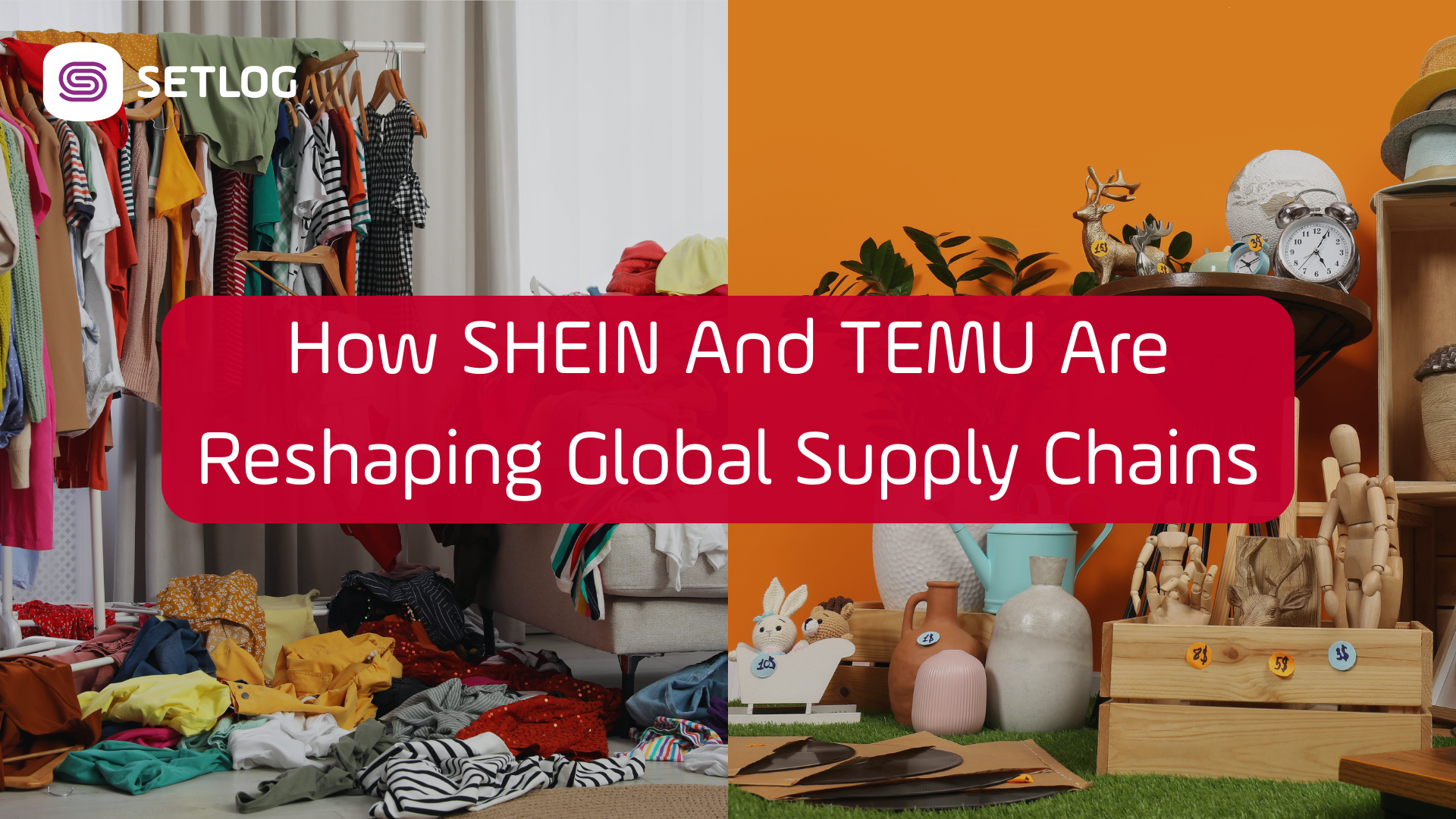
Platforms like SHEIN and TEMU are redefining global commerce with ultra-low prices, fast product cycles, and direct shipping from factories to consumers. Their success has reshaped expectations but at a price that is far below retail.
This blog post explores how these platforms destabilize supply chains by bypassing conventional sourcing strategies, overloading infrastructure, and shifting operational risk downstream and what it means for companies trying to remain competitive.
A Brief Look at the Platforms
SHEIN and TEMU have established themselves as dominant players in global e-commerce by adopting fundamentally different, yet equally disruptive, operating models.
SHEIN manages a centralized and data-driven production approach. Emerging fashion trends are identified through algorithmic analysis of digital behavior and quickly translated into new designs. These are manufactured in small batches by a tightly coordinated supplier network in China. With strong control over its partners, SHEIN can respond rapidly to demand changes while minimizing overstock — but at the cost of transparency and supplier pressure.
TEMU, in contrast, operates as a marketplace platform. It connects consumers directly with thousands of manufacturers, with minimal involvement in production or quality assurance. By leveraging scale, price subsidies, and centralized logistics, TEMU enables high-volume, low-cost transactions. Its decentralized supply base, however, complicates oversight and compliance.
Both platforms prioritize volume, and price — resulting in supply chain environments that are fast-moving but fragmented, and operationally complex.
Fragmented Logistics and Compliance Gaps
One of the most disruptive effects of TEMU and SHEIN’s models is the overwhelming volume of low-value parcels shipped directly from China to consumers worldwide. Resulting in air freight capacities becoming increasingly constrained, posing challenges even for well-established companies to secure sufficient cargo space. At the same time, last-mile logistics are reaching their operational limits. In the U.S. alone, over one million small parcels now arrive daily — straining postal systems, customs authorities, and delivery networks.
Until recently, many of these shipments qualified for de minimis exemptions, allowing goods under $800 to enter the U.S. duty-free and without standard customs scrutiny. New regulations taking effect on May 2 2025 will limit this loophole, but the damage is already visible: overloaded systems, lack of traceability, and unfair competitive advantages. Meanwhile, in the EU, a similar loophole persists: shipments under €150 remain exempt from customs duties, enabling to sidestep financial and regulatory checks. This not only incentivizes volume-driven shipping models but also hampers enforcement of EU-wide compliance and sustainability standards.
At the same time, regulatory oversight of the supply base is minimal. Without clear visibility into production origins, enforcement of standards is difficult. The combination of logistical fragmentation and regulatory gaps creates a structural imbalance — one where platforms move quickly, while accountability lags behind.
Transparency Gaps and Labor Risks
TEMU and SHEIN depend on vast, often anonymous supplier networks. With limited visibility into sourcing and production tiers, due diligence is nearly impossible. Audits, certifications, and traceability measures are routinely bypassed.
This lack of oversight enables serious labor violations: underpayment, excessive working hours, and unsafe conditions. Suppliers, facing relentless price and speed pressure, are often forced to cut corners. Ethical sourcing becomes reactive, and responsibility is diluted across fragmented supplier chains.
While traditional supply chains are held to increasingly strict ESG and human rights standards, ultra-fast platforms operate in compliance grey zones, gaining speed at the expense of control. This not only exposes systemic risks but also undermines companies committed to responsible sourcing.
The Squeeze on Traditional Supply Chains
SMEs and manufacturers operating within regulated supply chains struggle to compete with the speed and pricing of platforms like TEMU and SHEIN. Benefiting from state-subsidized transport, logistics scale, and previous tax exemptions, these platforms offer delivery speeds and prices that are difficult, if not impossible, to match.
For many businesses, this creates a market standard that is unrealistic and economically unsustainable. In addition to price pressure, companies face increasing instability in planning cycles as consumers grow accustomed to near-instant fulfillment.
📌 Strategic Responses for Struggling Businesses:
- Differentiate through transparency and ethics: Highlight traceable sourcing, fair labor, and sustainability.
- Optimize inventory and forecasting: Use digital tools to reduce overstock and respond faster to demand shifts.
- Strengthen customer loyalty through brand storytelling: Build engagement through authenticity and shared values.
While the structural advantages enjoyed by platforms like TEMU and SHEIN may persist, companies that focus on strategic positioning, operational agility, and supply chain integrity are better positioned to remain resilient in a shifting global landscape.
What Needs to Change?
The rise of ultra-fast platforms has exposed deep vulnerabilities in today’s supply chains — from agility to compliance. But instead of chasing speed or cost, supply chain leaders must refocus on resilience, transparency, and long-term value.
Nearshoring, smarter planning, and ethical sourcing aren’t just responses — they are competitive strategies. In a market shaped by disruption, the supply chains that endure will be those built on stability, visibility, and trust.
